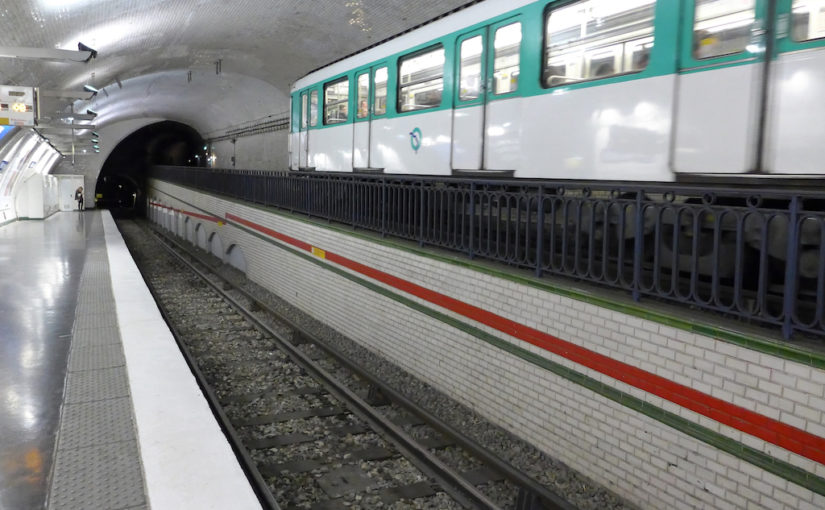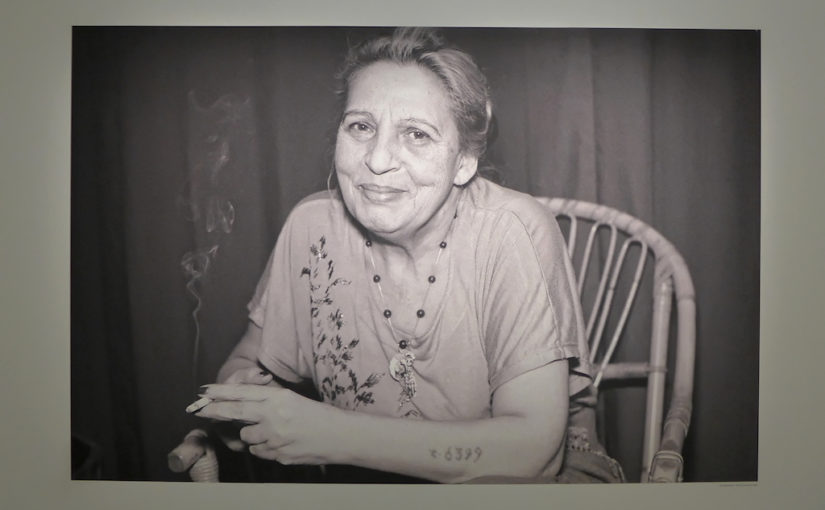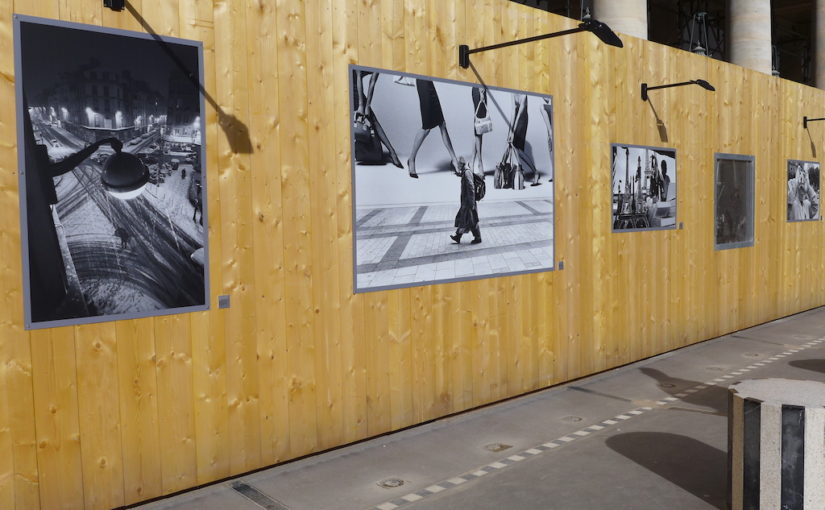A beautiful and striking exhibition is taking place at the Maison rouge in Paris until 20 May. For the first time in Paris the works of Ceija Stojka are exhibited. She is a Romani Austrian artist born in 1933. At the age of ten she had been deported with her family and survived three concentration camps. Many years later, when she was 55, she began to express her memories through writing, drawing and painting. She died in 2013.
In her poetic texts as well as in her naïf paintings one can hear in the same time the child and the mature woman who remembers. Ceija Stojka makes us live her carefree childhood in a gipsy caravan; her survival in concentration camps till the liberation of Bergen-Belsen; and her return to life and freedom, as if we were next to her. Her works are a vibrant voice for the culture, deportation and present condition of Roma. I had not seen such a beautiful and deeply moving exhibition for long!
In our gipsy caravan
The first room is dedicated to the carefree life of Roma before the war, a carefreeness and freedom that they will never regain : bright colours, idyllic landscapes, cheerful words…

Ceija Stojka-Quand on roulait-sans titre

Ceija Stojka-Quand on roulait-Poeme

Ceija Stojka-Quand on roulait-Sans titre

Ceija Stojka-Quand on roulait-Idylle avec ferme

Ceija Stojka-Voyage d ete dans un champ de tournesols
The Hunt
The following room is called: ‘La Traque’. Several paintings show Ceija and her brothers and sisters hiding themselves in a garden in Vienna. One can see only their frightened eyes…

Ceija Stojka-La Traque-Sans titre-3

Ceija Stojka-La Traque-Sans Titre-1

Ceija Stojka-La Traque-Sans Titre-2

Ceija Stojka-La Traque-4
Auschwitz: 31 March-June 1944
From the third room no more carefreeness. Ceija Stojka had been deported to Auschwitz with her mother, brothers and sisters in March 1944. Her paintings now show huge black boots, flags with swastikas, huts surrounded by barbed wire, dead bodies, chimneys and crows…

Ceija Stojka-Deportation dans un camp d extermination

Ceija Stojka-Auschwitz-2

Ceija Stojka-Auschwitz-1

Ceija Stojka-Auschwitz-Cadavres

Ceija Stojka-Auschwitz-Baraquements du camp
Ravensbrück: June-December 1944
The next room is called: Ravensbrück. Ceija, her mother and her sister Kathi were moved and deported in the women’s concentration camp of Ravensbrück in June 1944, only two months before the terrible liquidation of the Auschwitz-Birkenau Gipsy camp (2 August). Whether in Black & White or in colours the paintings referring to that period are deeply moving, and ‘les femmes de Ravansbrück’ is a true masterpiece.

Ceija Stojka-Les femmes de Ravensbruck

Ceija Stojka-Ravensbruck-2

Ceija Stojka-Ravensbruck-3

Ceija Stojka-Ravensbruck-1
Bergen-Belsen: January-15 April 1945
In January 1945 Ceija and her mother were taken to the concentration camp of Bergen-Belsen, firstly by truck and then on foot. In this camp where no more food was given to the deportees Ceija and her mother survived among dead bodies despite cold, hunger and fear. On 15 April 1945 Bergen-Belsen was freed by the English troups; then set on fire to prevent the spread of epidemics which had already killed many deportees. The works exhibited in this room show life and death in Bergen-Belsen, as well as the liberation of the camp.

Ceija Stojka-Je meurs de faim

Ceija Stojka-Noud ne savions pas encore… liberation

Ceija Stojka-La liberation de Bergen-Belsen

Ceija Stojka-Bergen Belsen-La liberation
Back to Life
The last room of the exhibition brings us back to life. The walls are coloured again and one can see blue skies and sunflowers, and the sun and mother earth which both bring us life and hope. One can feel how the past, the present and the future are mixed up. Even if the paintings are now coloured and cheerful, the carefreeness expressed by the works in the first room has gone…

Ceija Stojka-Retour a la vie-1

Ceija Stojka-Retour a la vie-sans titre

Ceija Stojka-Retour a la vie-sans titre-legende
It is difficult to find the words telling all that one feels after visiting such an exhibition. I have introduced you to very few of the works exhibited: there are many other paintings and texts and some photographs as well. I hope that this general survey has tempted you. I really loved it! Moreover it was my first visit to the Maison rouge and I highly recommend you to discover this amazing cultural place near the Bastille… before its closing in the end of 2018.
And to end, some words by Ceija Stojka:
“If the world doesn’t change now – if the world doesn’t open its doors and windows – if it doesn’t build peace – real peace – so that my great-great-grandchildren have a chance of living in this world, then I’m incapable of explaining why I survived Auschwitz, Bergen-Belsen and Ravensbrück.”
Practical information : Exhibition Ceija Stojka – La maison rouge-fondation antoine de galbert – 10 bd de la bastille 75012 – Until 20 May 2018 – wednesday till sunday: 11am-7pm (9pm on thursday)
Christine Bokobza – Good Morning Paris The Blog – www.goodmorningparis.fr



























